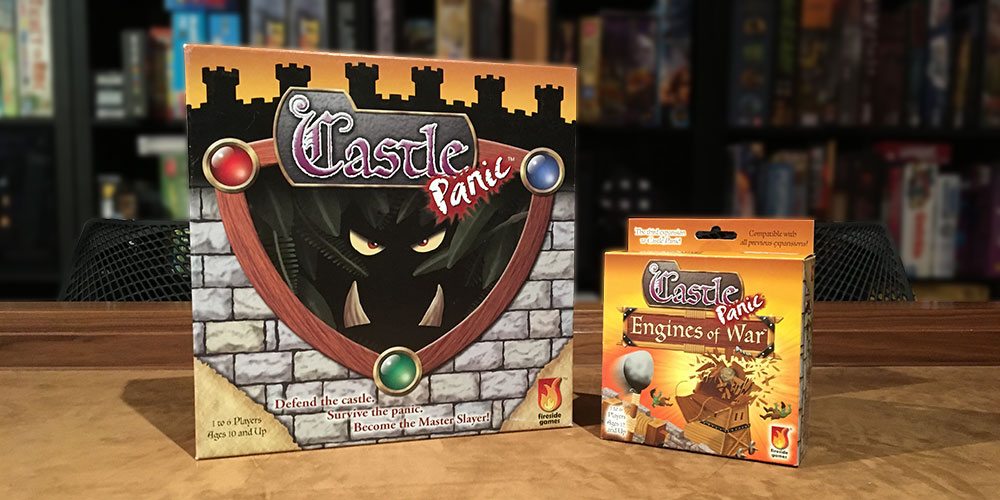
Castle Panic has always been one of our favorite family games. The cooperative fend-off-monsters and defend-the-castle game is clever and fun. What started out as a light game has seen several expansions and a few different re-imaginings of the base set. Out now is Engines of War, an expansion that gives players more ways to slay monsters — but turns the difficulty way up. Everybody panic!
Components
Engines of War needs a base Castle Panic set to play. You read GeekDad, so you already have one, right? In the small box, you get:
- A keep token
- An Engineer Tile
- A double-sided task tile
- 2 Spring trap tokens
- 2 Pit tokens
- 2 Barricade tokens
- A catapult token
- A ballista token
- 16 Resource cards
- 11 Monster tokens
- 3 Reference cards
- A rulebook
All of the components are great, just like in Castle Panic. The cartoonish monsters on the ingeniously rotating tokens that track health are wonderful again, as are most of the tokens. The art on the resource cards and Engineer and task tokens looks like it’s been done by someone else and doesn’t quite match, which is a bit odd. Further, the catapult and ballista tokens seem to have been cut a bit big in their notches so that when they sit on the Keep, they point downwards. The components are still very good, but when everything is of high quality, little differences stand out more.
Another minor drawback is that we’ve played Castle Panic so much that we easily tell which monster tokens are new ones by looking at their backs. We remedied this by throwing all the monster tokens in a sack for drawing.
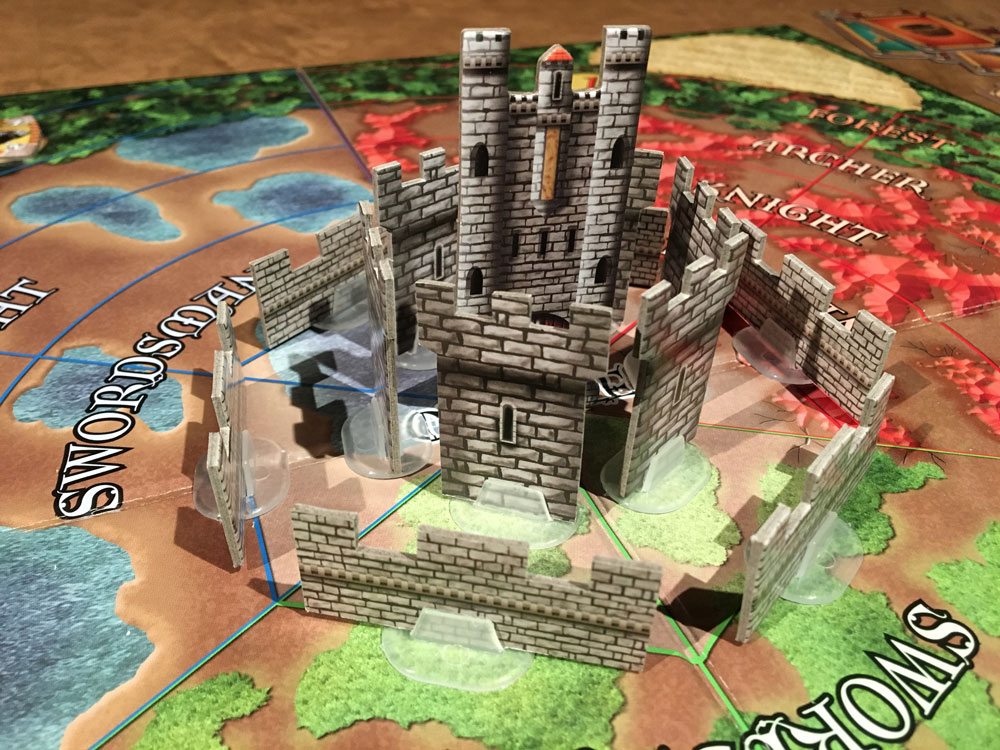
How to Play
There are different setup rules for Engines of War, depending on what expansions you are playing with or if you’re just playing with the base game. Basically, it involves removing certain tokens and cards from those games. Gameplay is still very much like Castle Panic and you can read a detailed explanation of those rules in our original review. There is just one minor difference to the basic play. When you draw up, you can take from the Castle deck or the Resource deck.
Resource cards take the place of the old brick and mortar cards and include new brick and mortar cards, along with wood and rope. Resource cards count toward your hand limit. Any player can set the Engineer to a task building a war engine and any player can play Resource cards toward helping the Engineer achieve that task. Cards committed can’t be picked up until the task is complete or a player cancels a task for the Engineer.
The Engineer can build two types of implements: Field Equipment and Castle Equipment. Among Field items, brick and rope will get you a barricade, essentially a wall that will hold back the monsters one turn and deal 1 damage to the monster that hits it first. He can also build pits with wood and mortar; these have the same results as barricades. Finally, there are spring traps, for the cost of rope and wood. A spring trap throws a monster back to the forest ring but deals no damage. None of these items affect flying monsters.
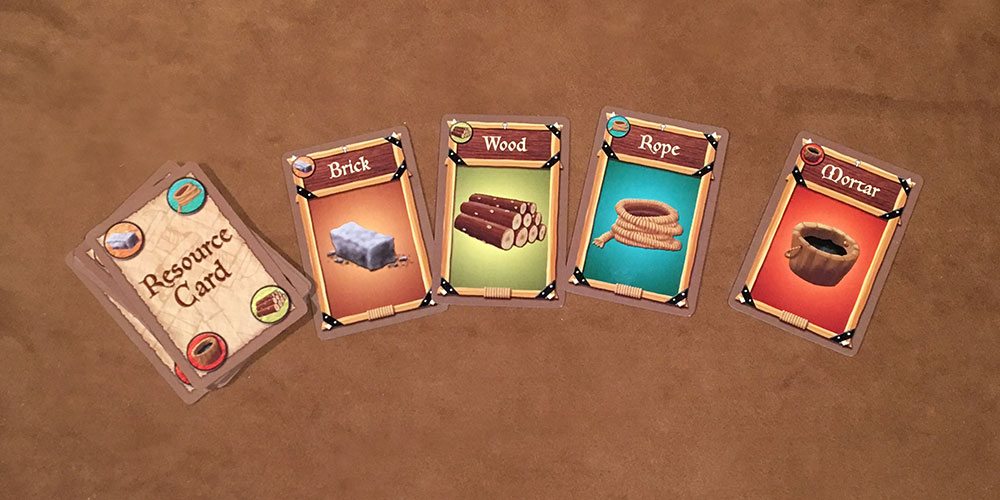
In the castle, the Engineer can build a wall for stone and mortar, again — just like in previous versions. The game starts with the Keep in the center of the board but, should it fall, it can be rebuilt for a single Resource card of each flavor. From the Keep, the engineer can add a catapult for rope and two wood, or a ballista for two rope and a wood, both of which target monsters outside the castle ring. These two weapons do harm flying monsters.
To fire either, a player must sacrifice two cards. If, for instance, a player wanted to target the red swordsman sector, the player would have to sacrifice either two cards that combined to vector that zone or a single card that single-handedly targets the zone, plus one more. To further define the rule, in this example, a red archer and a blue swordsman would qualify. If the player had a red swordsman, he would also have to sacrifice a second card, though its face would be irrelevant. The ballista fires a bolt that hits a monster in the targeted sector and does 2 damage. Additionally, the bolt keeps traveling and does a single point of damage to a monster in each ring directly behind the target. The catapult does 3 points damage to a sector and the player can decide how that damage is distributed.
Fantastic! That kind of power and ability to deal damage leaves you feeling invincible!
That is, until you read about how the monsters have been upgraded. There are three new monsters: a Breathtaker, who prevents you from trading cards while its on the board, a Shaman, who heals all monsters on the board each turn, and Goblin Saboteurs, of which there are two, who destroy structures and cause you to banish cards. Fun!
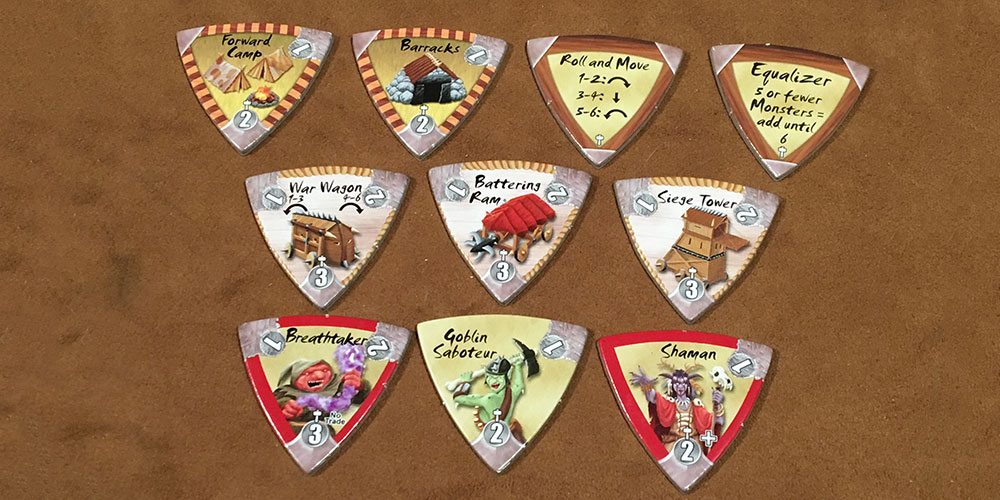
Additionally, there are a couple of monster effects, one which forces you to draw until there are six monsters on the board, another that provides a variable movement of monsters — forward, clockwise, or anti-clockwise. Sheesh!
But wait — there’s still more! Monsters also get three siege engines and two encampments. Siege Towers carry a force of two orcs, who operate the tower and emerge if the tower is destroyed. The Siege Tower moves to the castle ring and sits there until destroyed. While it is there, players cannot rebuild the wall in that sector. War Wagons take additional movement after moving forward each round, either clockwise or anti-clockwise, depending on a roll of the die. Any token that causes damage to the War Wagon also allows the War Wagon to take another movement forward. Battering Rams take no damage when destroying castle structures. Seriously? This is nuts!
The final advantages to the monsters are the encampments. Barracks put the first monster of each round in the forest of a particular ring, meaning a non-stop stream of monsters from a single area. Forward Camps put incoming monsters in the Archer ring, rather than the Forest. Brutal.
There are a lot of nuanced rules about all of this, but that’s the gist of it.

Why You Should Play
For five years, GeekDad has been a fan of Castle Panic. It’s fun, plays quickly, promotes cooperation, and is just a flat-out neat and clever game. For those who have played it a bit, there is a bit of challenge, but it’s not too tough if luck is on your side.
The first couple of expansions have made the game tougher and given it more depth. Engines of War, on the other hand, ratchets Castle Panic up to a whole new level. The tools you are provided are impressive, but building them takes time (and a bit of luck). On the other hand, the monsters have equally good advantages at their disposal. And the monsters don’t require the build up time that the players do.
I am reluctant to admit that in several games with Engines of War, we still have not won. And that’s OK! We like the challenge and when we finally do beat Castle Panic and Engines of War, it will be that much sweeter. Although, the desperation that fills me when flipping over the Shaman when there’s already five monsters on the board is something I may never overcome!
Engines of War still maintains all the cooperative fun that we’ve enjoyed in Castle Panic over the years. If you’re a Castle Panic fan, Engines of War is an expansion that breathes some new life (and good times) into a game that has been out for a while now.
Engines of War is available now.
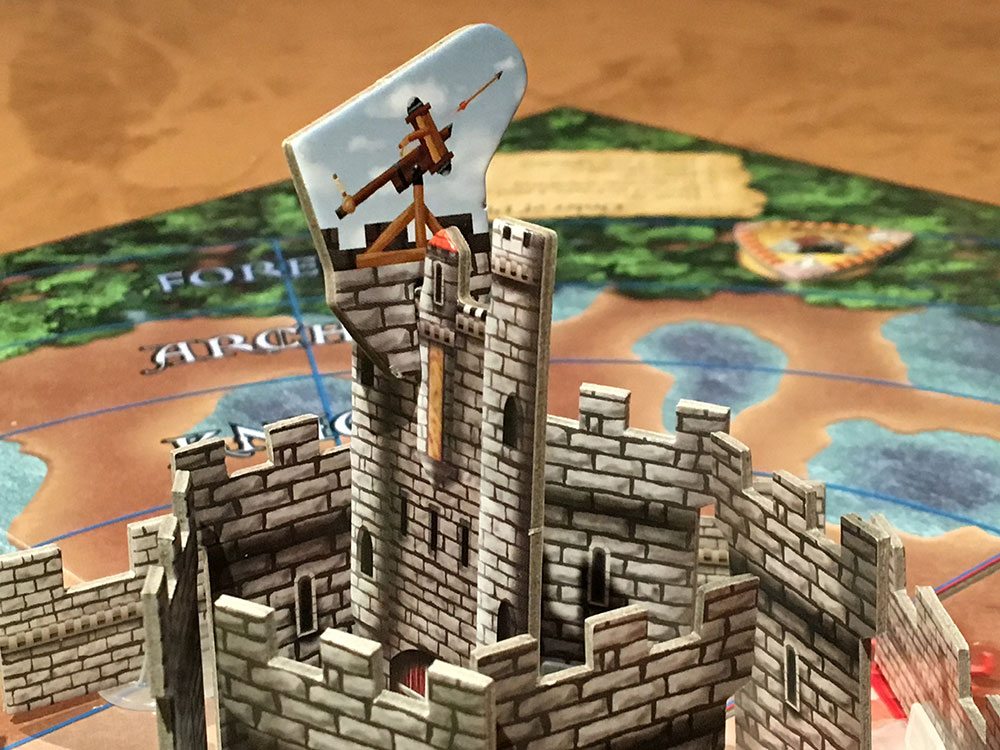
Disclosure: GeekDad was sent a copy of this expansion for review purposes.




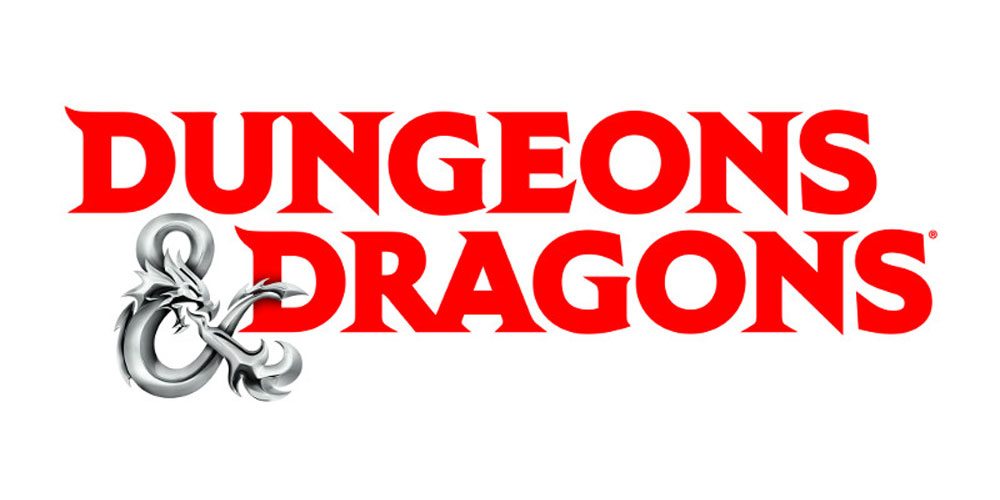
I love Castle Panic, and have all the expansions, but I have mixed feelings about Engines of War.
For one thing, the new Monsters are quite tough. A Siege Engine with two Orcs totals 7 damage, more than the Mega Boss Monsters. And since they can’t all be slain or even targeted at once they are arguably harder than Agranok.
I love the Field Equipment. The Barricades are particularly awesome (and BTW they DO affect Flying Monsters), and I get great satisfaction seeing a Spring Trap launch a Cyclops or a Golem into the trees. But the Catapult and Ballista just aren’t worth the cost. Although three cards might not seem onerous, it can take a lot of draws from the Resource deck to find two Wood and a Rope. And when you finally do buy one, the cost in hit cards to fire it just doesn’t seem to be worth the damage output. Combine that with a Breathtaker on the field preventing trading, and I find I’ve paid dearly for a weapon I can’t use.
Maybe I’ve just been unlucky, but I’ve played this expansion several times now and have virtually abandoned Catapult or Ballista from my strategic plans. Winning and losing is part of the game, but I am disappointed when certain features tip the balance in either direction so much that I prefer to leave them out.